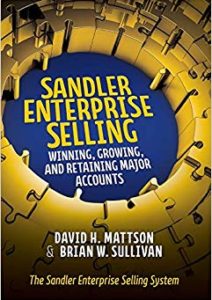As we slowly emerge from the grip of the pandemic or the pandemics, depending on how specific you’d like to be, our selling selves yearn for big hits. There’s nothing more satisfying than nailing a major win to recover quickly from the business malaise that has touched most of us over the last two years.
Big wins, of course, start with big opportunities. Those that tempt us to say, “It’s a big deal”, “It’s right in our power swing” or “It’s ours to lose”. But these optimistic exclamations feast on emotions and tend to ignore business logic. It would be interesting to see a study on the number of “Ours to lose” deals that actually result in losses. We can be assured that the number is higher than we’d hope. Sales optimism aside, though, we’re well aware of the importance of “Go/No-Go” decision-making to increase our chances of winning the deals we choose to pursue and to limit our trips down blind alleys. Doing that effectively is the very definition of competitive advantage.
But what about the deals where you already have an advantage? The deals that reside in your pipeline with very high probabilities of winning assigned to them. Maybe it’s an opportunity with a current client with whom you have a great relationship and tons of confidence in winning. Or a pursuit with a prospect where your solution addresses their pains so perfectly that you’re assured of success. Or a deal where your firm has been highly recommended by a very satisfied current client. These positives are so compelling that you populate CRM with those 90% probabilities, confident of and counting on success. Yours to lose, perhaps?
Remember your school days and studying for exams? There were those vexing courses that you found the most challenging, right? I love the Henry Link quote – “Fear is nature’s way of warning us to get busy”. In those troublesome courses, fear likely drove you to study diligently for exams. And your grades typically reflected that extra effort. But what about the courses that didn’t scare you at all? Precious little time was spent “cracking the books” for their tests and too often, the quality of your grades matched the quality of your preparation.
Selling offers us many similarities to these school experiences. After all, what are sales pursuits other than exams – tests where the goal is to win? In consulting with sales organizations, I find that strategies for high-percentage deals often mirror preparation for exams expected to be easy. Deals with 90% probabilities are considered already sold. Time and effort are diverted to pursuits seen as more competitive and in greater need of focus. Whether your confidence in what you think is a “done deal” is based on great relationships, perfect solutions, or glowing recommendations, you’re betting that your deployment of assets elsewhere won’t diminish your chances of winning. Losing would be unthinkable. Or would it?
High-probability deals are treasures. They’re not really about high percentages at all, though, but about hard-earned goodwill that can be carelessly squandered. Think about it. While you’re diverting attention to those other pursuits, real people are on the account side of your high probability deals. Real prospects still weighing their options. Your high win probabilities? They mean nothing to them. If your prospects sense they don’t have your attention or that you’re taking their unawarded business for granted, your real probabilities are far less than you imagine. If you’re not giving the accounts your best, they’ll know it. And you can count on the fact that you have competitors who are eager to do so.
So, how do you strike a practical balance between your focus on the high-percentage deals and those that are more competitive, especially in the light of this post-pandemic world? You start by following your Go/No-Go process to be certain that the deals you pursue are the right ones. Without that, you’re simply spinning the roulette wheel. Win probability, of course, is just one of the critical Go/No-Go factors. Regarding your most winnable deals, track with laser focus the three opportunities with the highest win probabilities, regardless of revenue size. And for each one, diligently craft customized four-step value propositions – the product/service proposed, what it does for the account, how the account benefits and how that benefit will be measured. Measured, of course, by the account. Then, identify the key actions to maximize your chances of winning for each of the three targeted deals. Finally, with focus and evident attention, go win them. Continuously refresh the three targeted opportunities as you go, moving each win out of the group and replacing it with the next highest probability deal. Lather, rinse, repeat.
Have an opportunity tracking process and follow it. And treat your highest probability opportunities with the special focus they rightfully deserve. Earning those high probabilities took hard work. Don’t do your organization or your client a disservice by carelessly taking your foot off the gas before you’ve reached the finish line. It’s a foolish strategy that you’ll regret for a very long time.












Comments